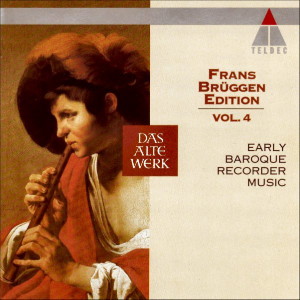 |
|
1 CD -
4509-97466-2 - (c) 1995
|
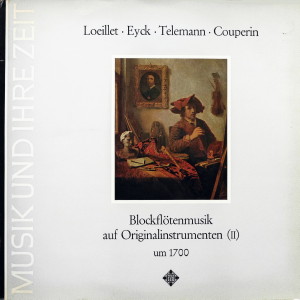
|
| 1 LP -
SAWT 9545-A - (p) 1969 |
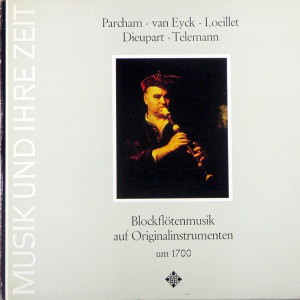 |
| 1 LP -
SAWT 9482-A - (p) 1966 |
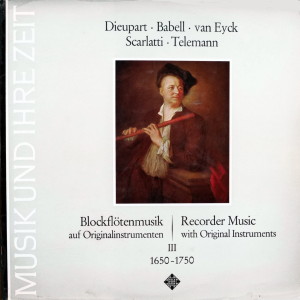 |
| 1 LP -
SAWT 9582-A - (p) 1971 |
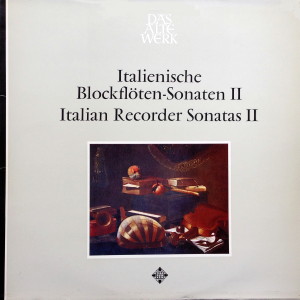 |
| 1 LP -
SAWT 9589-B - (p) 1973 |
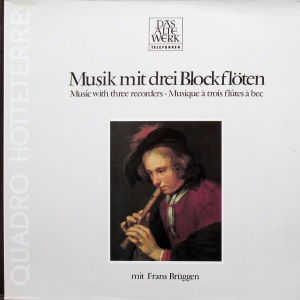 |
| 1 LP -
6.42365 AW - (p) 1979 |
|
| FRANS BRÜGGEN
EDITION - Volume 4 |
|
|
|
|
|
| EARLY BAROQUE RECORDER MUSIC |
|
|
|
|
|
| Jacob
van Eyck (1589/90-1657) |
|
|
| 1. Batali -
tenor recorder - from "Der
Fluyten Lust-Hof", Vol. II,
Amsterdam 1649 |
4'
40" |
|
| 2. Doen Daphne
d'over schoone Maeght -
descant recorder - from "Der
Fluyten Lust-Hof", Vol. I,
Amsterdam 1646 |
9'
04" |
|
| 3. Pavane
Lachryme - descant recorder
(four figurations on John Dowland's
Pavan Lacrimae) - from "Der
Fluyten Lust-Hof",
Vol. II |
2'
16" |
|
| 4. - Variat[ie] 1 |
2'
15" |
|
| 5. - Variat[ie]
2 |
3'
42" |
|
| 6. - Variat[ie]
3
|
2'
06" |
|
7. Engels
Nachtigaeltje - descant
recorder - from "Der
Fluyten Lust-Hof", Vol. I
|
5'
42" |
|
|
|
|
| Girolamo
Frescobaldi (1583-1643) |
|
|
| 8. Canzon per
Canto solo e Basso continuo "La
Bernardina" - descant
recorder, organ and violoncello -
from "Il primo libro delle
canzoni", Rome 1628 |
3'
24" |
|
|
|
|
| Giovanni
Paolo Cima (c.1570, fl until 1622) |
|
|
| 9. Sonata in D
- tenor recorder, organ and
violoncello - from "Concerti
ecclesiastici", Milan 1610 |
4'
10" |
|
| 10. Sonata in
G - tenor
recorder, violoncello,
organ - from "Concerti
ecclesiastici" |
4'
10" |
|
|
|
|
| Giovanni
Battista Riccio (fl 1609 - 1621) |
|
|
| 11. Canzon a 4
in A - descant, treble and
tenor recorder, violoncello and
organ |
4'
10" |
|
| 12. Canzon in
A "La Rosignola" Pian e
Forte - two descant recorders,
tenor recorder, violoncello and
harpsichord |
2'
54" |
|
|
|
|
| Samuel
Scheidt (1587-1654) |
|
|
| 13. Paduan a 4
in D - Treble, tenor and
bass recorder, violoncello and
organ - from "Paduana,
galliarda, courante,...",
Hamburg 1621 |
6'
15" |
|
|
|
|
| Anon. |
|
|
| Sonata in G
- three
descant recorders,
violoncello and
harpsichord (c. 1620,
German or Polish) |
2'
38" |
|
| 14. Moderato |
0'
40" |
|
| 15. Andantino |
1'
12" |
|
| 16. Allegretto |
0'
46" |
|
|
|
|
| Frans Brüggen, recorder |
|
| Anner Bylsma, violoncello
(8-10) |
|
| Gustav Leonhardt,
organ (8-10) |
|
Kees Boeke, recorder
(11-16)
|
|
| Walter van Hauwe,
recorder (11 -6) |
|
| Wouter Möller, violoncello
(11-16) |
|
Bob van Asperen,
organ (11, 13) & harpsichord (12,
14-16)
|
|
|
|
|
|
Luogo
e data di registrazione |
|
-
Bennebroek (Olanda) - aprile &
maggio 1969 [1-2]
-
Doopsgezinde Kerk, Amsterdam
(Olanda) - gennaio &
novembre 1971 [7]
-
Amsterdam (Olanda) - giugno 1972
[8-10]
- Doopsgezinde
Kerk, Haarlem (Olanda) - luglio
1979 [11-16]
|
|
|
Registrazione:
live / studio |
|
studio |
|
|
Producer /
Engineer |
|
Wolf
Ericson [1-2] - Heinrich Weritz
[8-11]
|
|
|
Prima Edizione
LP |
|
- Telefunken
"Das Alte Werk" - SAWT 9545-A -
(1 LP) - durata 41' 45" - (p)
1969 - Analogico [1-2]
-
Telefunken "Das Alte Werk" -
SAWT 9482-A - (1 LP) - durata
48' 01" - (p) 1966 - Analogico
[3-6]
- Telefunken
"Das Alte Werk" - SAWT
9582-A - (1 LP) - durata 52'
43" - (p) 1971 - Analogico
[7]
-
Telefunken "Das Alte Werk"
- SAWT 9589-B - (1 LP) -
durata 40' 54" - (p) 1973
- Analogico (8-10)
-
Telefunken "Das Alte
Werk" - 6.42365 AW - (1
LP) - durata 39' 49" -
(p) 1979 - Analogico
[11-16]
|
|
|
Edizione CD |
|
Teldec
- 4509-97466-2 - (1 CD) - durata
58' 32" - (c) 1995 - ADD |
|
|
Note |
|
- |
|
|
|
|
In
the early years of the 17th
century when instrumental
music was increasingly
breaking free from its vocal
models and developing its
own independent forms, the
terms “sonata” and “canzona”
were initially
interchangeable. Even as
late as 1637
a collection of instrumental
works by Tarquinio Merula
was published in Venice
under the title Canzoni
overo [or] Sonate.
Michael Praetorius attempted
a more detailed definition
in his Syntagma musicum
of 1618,
in which he discussed the
newest and most modern music
of his age: "In
my own view, however, this
is the difference,
namely, that sonatas are
set in a particularly
solemn and magnificent style
in the manner of a motet,
whereas canzonas, with their
many black notes, pass by
briskly merrily and
swiftly."
Girolamo Frescobaldi's
Canzona (in the edition of
the full score published in
Rome in 1628 it bore the
title “La Bernadina”)
certainly contains plenty of
"black
notes" and elaborate
passagework
especially towards the end.
The numerous adagio
interpolations are a modern,
canzona-based element,
whereas the imitative
part-writing reflects the
more conservative
compositional style
associated with the motet. In
consequence, the present
work is not exactly
representative of the
canzona an narrowly defined
by Praetorius.
In
Giovanni Battista Riccio's
Canzona, “La Rosignola”,
contrapuntal passages are
similarly contrasted with
dancelike episodes and with
soli and echo passages
(“Pian e Forte”) between the
two descant recorders. The
result is a piece which,
thanks to its use of
contrast and its interplay
between rhythmic and dynamic
elements, "passes
by merrily and swiftly".
These same characteristics
are also found, at least in
part, in an anonymous
Canzona dating from around
1620 and probably the work
of a German or Polish
composer living in Breslau.
Very little is known about
Riccio’s life, except that
he was appointed organist of
the Confraternita di S
Giovanni Evangelista in
Venice in 1609. In
the case of Giovanni Paolo
Cima, we can at least say
that he was organist at S
Celso in Milan and that in
addition to being a prolific
composer of instrumental
music, he also concerned
himself with the theory of
counterpoint, a concern that
found practical expression
in his Sonata in G minor, in
which descant and bass are
imitatively conceived. (A
similar feature had been
found in Frescobaldi's
Canzona.) Cima's Sonata is
further notable for the fact
that the initial theme is
taken up again and reworked
several times in the course
of the piece.
In
keeping with contemporary
musical praxis, all these
works (including Scheidt’s
Pavan) can be played on a
variety of different
instruments according to the
performers’ own discretion.
(In
his 1628 edition of "La
Bernadina", for example,
Frescobaldi writes "Violino
over Cornetto, come stà".)
Only
in the case of the pieces
from Jacob
van Eyck’s Der Fluyten
Lust-Hof of 1646 is
such discretion out of the
question, since all were
clearly written for the type
of recorder that van Eyck
himself appears to have
played. In 1648 he received
a pay rise of 20 thalers
from the Utrecht Town
Council for “entertaining
passersby in the churchyard
[at St John's]
by playing on his little
recorder”. His works are
based on sacred and secular
melodies wellknown in his
day and ornamented with a
series of variations. They
demonstrate the high
technical level attained by
recorder players in the
early years of the 17th
century.
Christian
Müller
·····
A brief
history of the
recorder
4.
The recorder in the 18th
century
The
first half of the 18th
century marked the
golden age of the
recorder as a solo
instrument. The descant
and treble instruments
were particularly
popular, hence the fact
that more of these two
types have survived than
of the tenor or bass
members of the family.
The most important
distinguishing features
of the Baroque recorder
are to be found in the
scaling of the tube and
the shape of the
windway. Most Baroque
instruments are in three
sections and elaborately
carved; mouthpiece and
rings are often of ivory
for aesthetic effect.
The holes are conically
drilled, wider on the
outside, narrower on the
inside, allowing the
player to produce a more
individual attack
without affecting the
pitch.
The Baroque treble
recorder generally has a
range of f' - g"/a'",
a range achieved by a
complex relationship
between its cylindrical
and conical dimensions
and by a complicated
system of fingering.
(The windway is
slightly curved and
conical, with the
distance from the end
of the windway to the
labium or lip being of
particular
importance.) The
descant recorders used
in schools today have
considerably
simplified bores and
windways; the sound is
far more monotonous,
the attack duller. Instruments
built in the old way
produce a more vibrant
sound with fewer
overtones. Moreover,
each tone and semitone
has its own colour, a
phenomenon that has
been lost from modern
wind instruments.
Recorder makers of the
18th century used
European boxwood by
preference, although
well-to-do customers
often commissioned
flutes of pure ivory
or with ivory
decorations, sometimes
even with a
tortoiseshell case. As
amateurs, such clients
no doubt played their
precious instruments
less frequently than
professional
musicians, who could
presumably afford only
the usual wooden
recorders. This may
explain why such an
extraordinarily large
number of recorders
has survived from the
18th century made
solely or partly of
ivory.
National
styles: the Low
Countries (I)
When Richard
Haka moved from London
to Amsterdam in around
1650, there were few
indications that he
was destined to become
Amsterdam's first and
most famous maker of
wind instruments. His
earliest instruments
date from the 1670s.
An advertisement of
1691 describes him as
a maker of “flutes,
oboes, bassoons and
military shawms”. At
this time the city’s
economy was enjoying
something of an
upturn, a prosperity
reflected in the
widespread private
cultivation of music
among the merchant
classes. Among Haka’s
surviving instruments
are two descant
recorders of
granadilla with ivory
rings (one of them is
in Frans Brüggen's
private collection and
may be heard in track
4). They are somewhat
old-fashioned for
their period, with a
tube made of two
sections and a double
hole for the little
finger. They have a
refined and attractive
sound relatively high
in overtones.
Peter
Holtslag
Translation:
Stewart Spencer
|
|